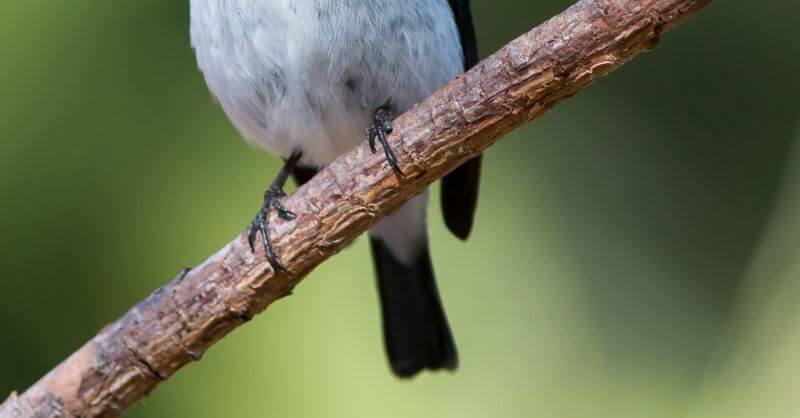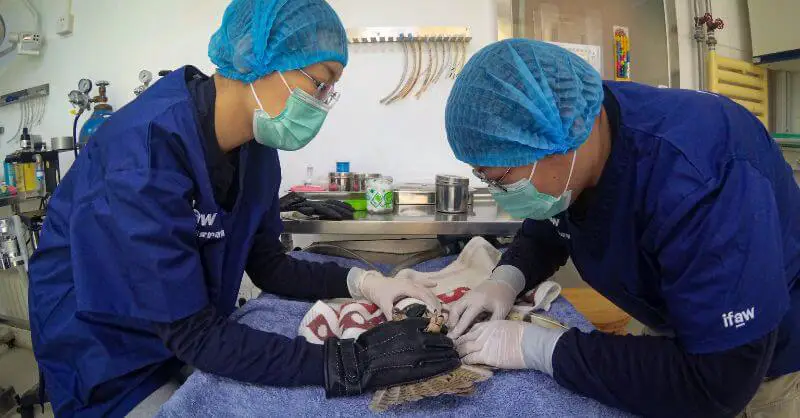Have you ever wondered how birds keep their nails trimmed in the wild? After all, birds don’t have access to nail clippers or emery boards like we do. Yet, their nails always seem to be perfectly shaped and maintained.
Birds in the wild naturally maintain their nail length through activities like perching, scratching on rough surfaces like tree branches or rocks, and wearing them down while they walk and hunt for food.
When birds perch on rough surfaces, their nails rub against the surface and gradually wear down. This helps to keep their nails healthy and prevents them from becoming overgrown.
In this blog post, we’ll learn about bird nail care and discover how birds are able to keep their nails in tip-top shape without any human intervention.

Natural Ways Birds Trim Their Nails
Perching on rough surfaces:
Birds’ nails are made of keratin, the same material that makes up human hair and nails. When birds perch on rough surfaces, such as tree bark or rocks, the friction of the surface helps to file down the nails. This is why you often see birds perching on branches with rough bark.
Using their beaks:
Birds can also use their beaks to file down their nails. They do this by nibbling at their nails or rubbing them against a hard surface. This is a common way for birds of prey to keep their talons sharp.
Using branches or other objects:
Birds may also use branches or other objects in their environment to file their nails. They may rub their nails against a branch or twig, or they may use a rock or other hard object. This is a common way for birds to keep their nails in good condition, even if they do not have access to rough surfaces.
| Method | Examples of Birds |
|---|---|
| Perching on rough surfaces | Parrots, parakeets, woodpeckers, budgies, cockatiels, macaws, lovebirds, canaries, finches, and many others. |
| Using their beaks | Eagles, falcons, hawks, owls, vultures, and other birds of prey. |
| Using branches or other objects | Woodpeckers, toucans, parrots, and other birds that use their beaks to pry open food. |

Pet Birds Nail Trimming
Birds may also need their nails trimmed by a human if they are kept as pets. This is because birds in captivity do not have the same opportunities to wear down their nails naturally.
Wild birds that are kept as pets may need their nails trimmed more often than wild birds, as they may not have the same opportunities to wear down their nails naturally.
When trimming a bird’s nails, it is important to be careful not to cut too close to the quick, which is the blood supply to the nail. If the quick is cut, it can bleed profusely and cause pain to the bird.
Signs that your bird’s nails need to be trimmed:
- The nails are curling or growing into the bird’s toes.
- The nails are making it difficult for the bird to walk or perch.
- The nails are causing the bird pain.
Tips for trimming pet bird’s nails
- Use a sharp nail clipper or file designed for birds.
- Have a styptic powder or cornstarch on hand in case of bleeding.
- Wrap the bird in a towel to help keep it calm.
- Trim only the tips of the nails.
- Reward the bird with a treat after the nails are trimmed.
How often do wild birds typically trim their nails?
Wild birds typically trim their nails every few weeks to a few months. They might bite their nails. The frequency of nail trimming depends on a number of factors, including the bird’s species, age, activity level, and environment.
Birds that perch on rough surfaces, such as tree bark or rocks, will typically need their nails trimmed less often than birds that do not have access to these surfaces. Birds that are more active will also need their nails trimmed more often, as their nails will wear down more quickly.
It is important to inspect your pet bird’s nails regularly and trim them as needed to prevent them from becoming overgrown.

Risks associated with wild birds trimming their nails
There are no known risks associated with wild birds trimming their nails. Birds have evolved to naturally trim their nails, and they do so without any problems. However, there are some risks associated with humans trimming wild bird nails.
- Infection: If a human cuts too close to the quick, the nail may bleed and become infected. This can be a serious problem for the bird, and it may require veterinary treatment.
- Stress: Trimming a wild bird’s nails can be stressful for the bird. If the bird is not used to being handled, it may become agitated and injured.
- Escape: If a wild bird is not properly restrained, it may escape during the nail-trimming process. This can be dangerous for the bird, as it may be injured or killed by predators.
For these reasons, it is generally not recommended to trim the nails of wild birds. If you find a wild bird with overgrown nails, it is best to contact a wildlife rehabilitator. They will be able to safely trim the bird’s nails and release it back into the wild.
Bird nails self-maintenance
Some unique features of bird nails help them maintain their nails naturally and keep them healthy and strong. It is also important for their ability to fly, perch, and climb.
- Shape: Bird nails are curved and pointed, which helps them to grip branches, prey, and other surfaces. The curve of the nail also helps to file it down naturally as the bird perches.
- Material: Bird nails are made of keratin, the same material that makes up human hair and nails. Keratin is a strong and durable material that can withstand the wear and tear of everyday activities.
- Quick: The quick is the blood supply to the nail. It is located at the base of the nail and is visible as a pink or red spot. Bird nails have a long quick, which helps to protect the nail from injury.
- Growth rate: Bird nails grow relatively slowly to prevent them from becoming overgrown.
- Grooming: Birds groom themselves regularly to keep their nails clean and free of dirt and debris.
Things you should be careful before cutting a bird’s nail
If you cut your bird’s nails too short it can cause the nail to bleed. It is very painful for the bird. It is important to be careful when trimming your bird’s nails and to avoid cutting too close to the quick.
You should only cut the very tips of your bird’s nails. Avoid cutting the pink or red area at the base of the nail.
Wrap Up
The mystery of how birds naturally trim their nails in the wild reveals their ingenious self-maintenance. From perching on rough surfaces to engaging in daily activities, these feathered creatures have evolved clever ways to keep their nails in check.
As we marvel at nature’s design, it deepens our appreciation for the simple yet effective ways birds naturally care for themselves in their wild habitats.
FAQ
What is a bird’s nail called?
A bird’s nail is called a claw.
Can you cut birds’ nails with scissors?
No, you should not cut bird nails with scissors. Scissors can easily cut too deep and cause the bird pain or injury. You should use a special type of nail clippers designed for birds.
Do I need to cut my bird’s claws?
Parrots and parakeets may need their claws trimmed regularly to prevent them from becoming overgrown. Other birds, such as finches and canaries, may not need their claws trimmed as often.
Do birds cut their own nails?
Yes, birds do cut their own nails naturally. They do this by perching on rough surfaces, such as tree bark or rocks. The friction of the surface helps to file down the nails.
Where can I get my bird’s nails clipped near me?
If you are not comfortable trimming your bird’s nails yourself, you can take them to a veterinarian or a bird groomer. They will be able to trim the nails safely and professionally.
You can search Google writing – ‘bird’s nails clipped near me’, and you can see a bunch of places with addresses, phone numbers, map locations, and opening and closing times. Remember to check their ratings and reviews before going to them.
How to trim parakeet nails naturally
Provide your parakeet with a variety of rough surfaces to perch on. Give your parakeet a bird-safe nail file to chew on.

I am a writer and blogger who is passionate about birds. I write to inspire and educate others about the beauty and importance of avian species in our ecosystem. I love to watch birds flying and taking their photographs to capture those memories.

